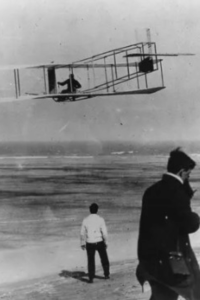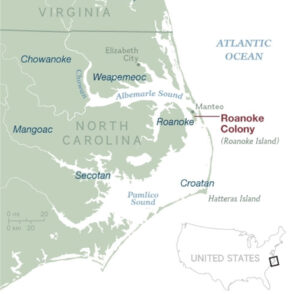Top 10 Things to Do in Coastal North Carolina This Summer
From quiet waterfront getaways to seafood festivals, coastal North Carolina is a summer destination full of natural beauty, culture, and adventure. Whether you’re exploring the Inner Banks or cruising the Intracoastal Waterway, here are our favorite ways to soak up the season:
1. Boat the Intracoastal Waterway
Pack a cooler, chart your course, and experience one of the most scenic stretches of water on the East Coast. Whether you're paddling, sailing, or motoring, the ICW offers endless day-trip possibilities.
2. Explore Historic Edenton
Just a short drive from Occano, Edenton is known as one of America’s prettiest small towns. Browse charming shops, take a trolley tour, or grab a bite on the waterfront.
3. Hit the Beaches of the Outer Banks
From Nags Head to Ocracoke, the OBX offers wide beaches, rolling dunes, and relaxed beach towns perfect for a day trip or weekend getaway.
4. Cast a Line in the Albemarle Sound
Summer means prime fishing in the Sound — from striped bass to flounder. Bring your own boat or hop on a local charter.
5. Visit Roanoke Island Festival Park
Dive into NC’s coastal history with hands-on exhibits, a replica 16th-century ship, and outdoor performances in a stunning waterfront setting.
6. Eat Your Way Through a Seafood Shack Crawl
From soft-shell crab to hush puppies, nothing says summer like an open-air table, cold drink, and fresh catch of the day. Favorites include local spots in Columbia, Edenton, and Manteo.
7. Tour a Lighthouse (or Three)
Make a day of it and explore some of the state’s iconic lighthouses, like Bodie Island, Currituck Beach, or Cape Hatteras.
8. Paddle the Cashie River or Scuppernong River
Both rivers are calm, scenic, and filled with cypress trees, birdlife, and peaceful coves — ideal for kayaking or canoeing.
9. Catch a Summer Festival
Celebrate like a local with seasonal events like the Shrimp Festival in Sneads Ferry, the Watermelon Festival in Murfreesboro, or small-town Fourth of July parades.
10. Watch the Sunset at Occano
Of course, our favorite way to end a coastal Carolina day is right here at Occano — cocktail in hand, feet in the grass, and the sky lit in hues you won’t find anywhere else.
Want help planning a stay near the Albemarle Sound? Reach out to the Occano team — we’re happy to share insider tips or help book your discovery visit.
The Wright Brothers, Orville and Wilbur, made history on December 17, 1903, in Kitty Hawk, North Carolina, when they achieved the first controlled, powered flight in a heavier-than-air machine. Chosen for its steady winds and soft sands, the small coastal area provided ideal conditions for their aviation experiments. After several attempts, their successful flight that morning marked a turning point in human history, changing the future of travel, communication, and exploration. This historic feat not only demonstrated the potential of powered flight but also cemented North Carolina’s role in aviation history, leading to its state slogan, "First in Flight."
 Today, visitors can honor and learn more about the Wright brothers’ achievements at the Wright Brothers National Memorial in Kill Devil Hills, just outside Kitty Hawk. Managed by the National Park Service, this memorial features a towering granite monument on top of Kill Devil Hill, where the brothers conducted many of their early glider tests. The Visitor Center houses replicas of the 1903 Wright Flyer, interactive exhibits, and artifacts from the brothers' work, allowing visitors to explore the science, trials, and triumphs behind the first flight. There’s also a Flight Line where markers indicate the distances of the Wrights’ first four flights, giving a sense of the progression of their achievements that day.
Today, visitors can honor and learn more about the Wright brothers’ achievements at the Wright Brothers National Memorial in Kill Devil Hills, just outside Kitty Hawk. Managed by the National Park Service, this memorial features a towering granite monument on top of Kill Devil Hill, where the brothers conducted many of their early glider tests. The Visitor Center houses replicas of the 1903 Wright Flyer, interactive exhibits, and artifacts from the brothers' work, allowing visitors to explore the science, trials, and triumphs behind the first flight. There’s also a Flight Line where markers indicate the distances of the Wrights’ first four flights, giving a sense of the progression of their achievements that day.
The park also offers interpretive programs, guided tours, and special events, often celebrating milestones of the Wright brothers' journey. The area around Kitty Hawk and Kill Devil Hills has become a hub for aviation enthusiasts, history buffs, and tourists drawn to the site of one of humanity’s most significant achievements. A visit to the Wright Brothers National Memorial not only provides a glimpse into the challenges the brothers faced but also offers inspiration, reminding visitors of the power of persistence, innovation, and vision.
The Lost Colony of Roanoke, founded in 1587, is one of America's oldest and most tantalizing mysteries. Under the patronage of Sir Walter Raleigh, this colony was England's first serious attempt to establish a permanent settlement in the New World. Led by John White, a group of around 115 settlers (including White’s own daughter and granddaughter, Virginia Dare, the first English child born in America) arrived on Roanoke Island off the coast of modern-day North Carolina. Their ambition was to build a life in the New World, but they soon faced immense challenges, from scarce supplies to the unknown environment. When White returned to England to gather more provisions, the ongoing war with Spain delayed his return until 1590. Upon his arrival back at Roanoke, he discovered the colony deserted. The settlers had vanished, leaving only a clue to their fate, the word “CROATOAN” carved into a post.
 This single, carved word pointed to Croatoan Island (now Hatteras Island) to the south, where friendly Native Americans were known to live. However, when White attempted to search for his people there, severe storms forced him to abandon his plans. Over the centuries, countless theories have emerged about the colonists’ fate. Some historians believe they assimilated with local tribes, merging their lives and cultures, while others speculate that they suffered a tragic fate due to starvation, disease, or violence. Archaeological digs in the region, including recent efforts on Hatteras Island, have unearthed artifacts from the Elizabethan era, such as English copper and pottery, suggesting some settlers may have integrated with Native communities. However, no definitive evidence has yet solved the riddle, and the mystery of the Lost Colony remains.
This single, carved word pointed to Croatoan Island (now Hatteras Island) to the south, where friendly Native Americans were known to live. However, when White attempted to search for his people there, severe storms forced him to abandon his plans. Over the centuries, countless theories have emerged about the colonists’ fate. Some historians believe they assimilated with local tribes, merging their lives and cultures, while others speculate that they suffered a tragic fate due to starvation, disease, or violence. Archaeological digs in the region, including recent efforts on Hatteras Island, have unearthed artifacts from the Elizabethan era, such as English copper and pottery, suggesting some settlers may have integrated with Native communities. However, no definitive evidence has yet solved the riddle, and the mystery of the Lost Colony remains.
Today, Roanoke Island preserves this haunting legacy with a historical site where visitors can step directly into the mystery. Each summer, guests are invited to experience The Lost Colony, an outdoor drama that reenacts the final days of the settlers and the mystery of their disappearance right where it all began. The site features reconstructed forts, an interactive museum, and exhibits showcasing artifacts that may offer clues to the fate of the colony. These glimpses into the past invite curiosity and exploration, with each artifact and story woven into North Carolina’s cultural fabric. Roanoke Island remains a place where new theories and discoveries keep the legend alive, captivating audiences with its tale of courage, hope, and one of history’s most enduring unsolved mysteries.
© 2024 Occano. All Right Reserved
105 Scotch Hall Court, Merry Hill, NC 27957
Enter your email address and we will send you a link to change your password.